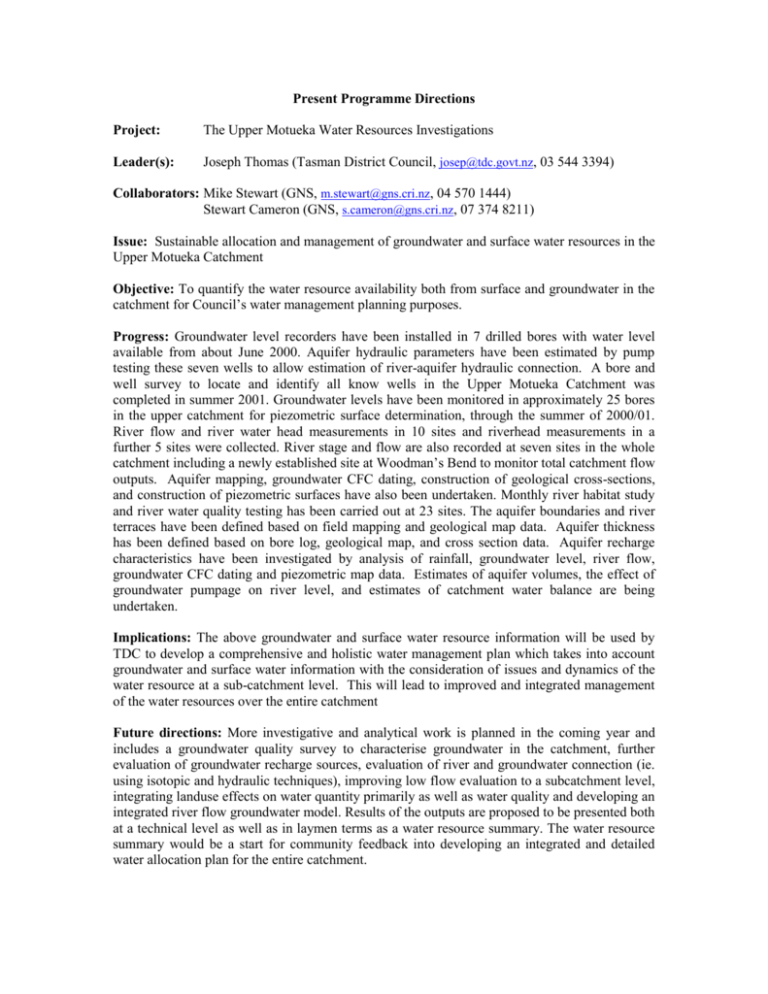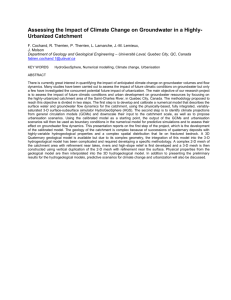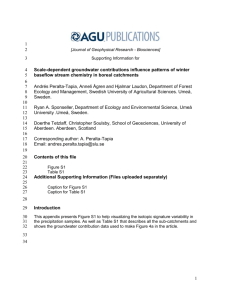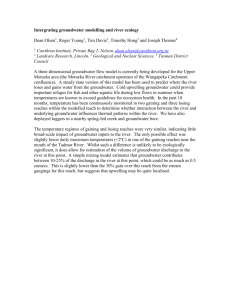The Upper Motueka Water Resources Investigations
advertisement

Present Programme Directions Project: The Upper Motueka Water Resources Investigations Leader(s): Joseph Thomas (Tasman District Council, josep@tdc.govt.nz, 03 544 3394) Collaborators: Mike Stewart (GNS, m.stewart@gns.cri.nz, 04 570 1444) Stewart Cameron (GNS, s.cameron@gns.cri.nz, 07 374 8211) Issue: Sustainable allocation and management of groundwater and surface water resources in the Upper Motueka Catchment Objective: To quantify the water resource availability both from surface and groundwater in the catchment for Council’s water management planning purposes. Progress: Groundwater level recorders have been installed in 7 drilled bores with water level available from about June 2000. Aquifer hydraulic parameters have been estimated by pump testing these seven wells to allow estimation of river-aquifer hydraulic connection. A bore and well survey to locate and identify all know wells in the Upper Motueka Catchment was completed in summer 2001. Groundwater levels have been monitored in approximately 25 bores in the upper catchment for piezometric surface determination, through the summer of 2000/01. River flow and river water head measurements in 10 sites and riverhead measurements in a further 5 sites were collected. River stage and flow are also recorded at seven sites in the whole catchment including a newly established site at Woodman’s Bend to monitor total catchment flow outputs. Aquifer mapping, groundwater CFC dating, construction of geological cross-sections, and construction of piezometric surfaces have also been undertaken. Monthly river habitat study and river water quality testing has been carried out at 23 sites. The aquifer boundaries and river terraces have been defined based on field mapping and geological map data. Aquifer thickness has been defined based on bore log, geological map, and cross section data. Aquifer recharge characteristics have been investigated by analysis of rainfall, groundwater level, river flow, groundwater CFC dating and piezometric map data. Estimates of aquifer volumes, the effect of groundwater pumpage on river level, and estimates of catchment water balance are being undertaken. Implications: The above groundwater and surface water resource information will be used by TDC to develop a comprehensive and holistic water management plan which takes into account groundwater and surface water information with the consideration of issues and dynamics of the water resource at a sub-catchment level. This will lead to improved and integrated management of the water resources over the entire catchment Future directions: More investigative and analytical work is planned in the coming year and includes a groundwater quality survey to characterise groundwater in the catchment, further evaluation of groundwater recharge sources, evaluation of river and groundwater connection (ie. using isotopic and hydraulic techniques), improving low flow evaluation to a subcatchment level, integrating landuse effects on water quantity primarily as well as water quality and developing an integrated river flow groundwater model. Results of the outputs are proposed to be presented both at a technical level as well as in laymen terms as a water resource summary. The water resource summary would be a start for community feedback into developing an integrated and detailed water allocation plan for the entire catchment.








